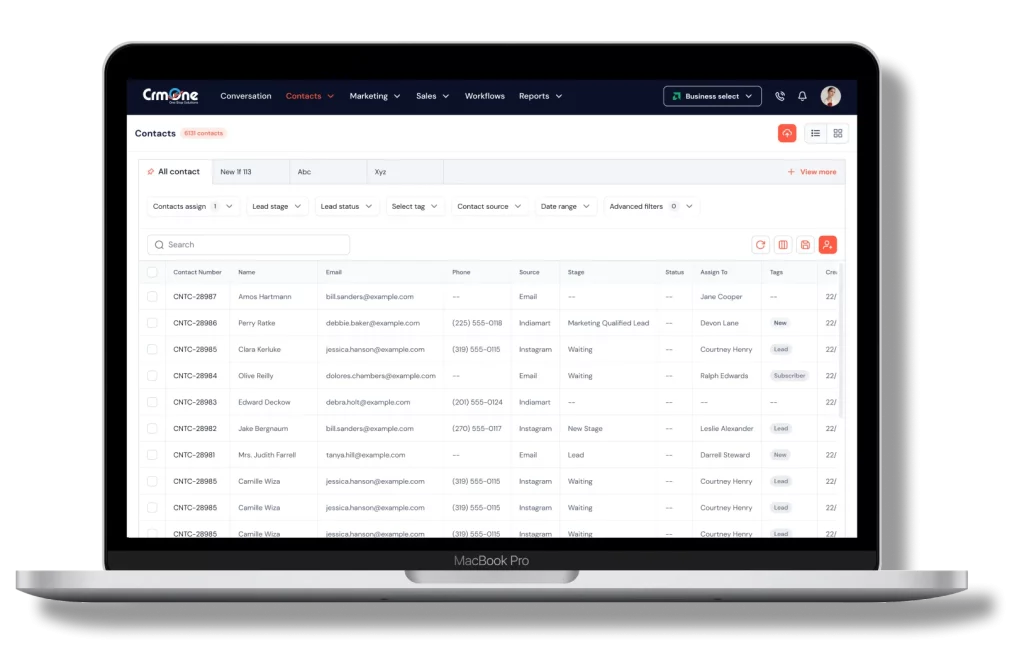Crafting a perfect omnichannel marketing strategy is no longer just an option for businesses; it’s necessary in today’s hyperconnected world. Consumers’ expectations for a consistent and personalized omnichannel experience continue to rise as they seamlessly transition between online and offline channels. To meet these demands, businesses must adapt their marketing strategies with a customer-centric approach. This comprehensive guide aims to provide you with the insights and techniques needed to build an omnichannel marketing strategy that drives engagement, fosters loyalty, and ultimately boosts revenue.
At its core, omnichannel marketing creates a unified customer experience through all touchpoints, from your website and social media platforms to physical stores. By integrating and coordinating these various channel marketing efforts, businesses can deliver a cohesive customer journey that meets customers wherever they are in their buying process. However, building an effective omnichannel strategy requires more than multiple platforms—it requires strategic planning, thoughtful execution, and greater clarity for your target audience.
Throughout this guide, we’ll delve into the critical components of an omnichannel strategy, including integrated marketing channels, personalized communication, channel marketing, marketing automation, and data interpretation. By mastering these elements, your marketing team will be well-equipped to create a cohesive and impactful marketing strategy that relates to your audience and drives business growth. This guide will provide the knowledge to succeed in today’s competitive marketplace, fostering long-term customer relationships.
Omnichannel Marketing
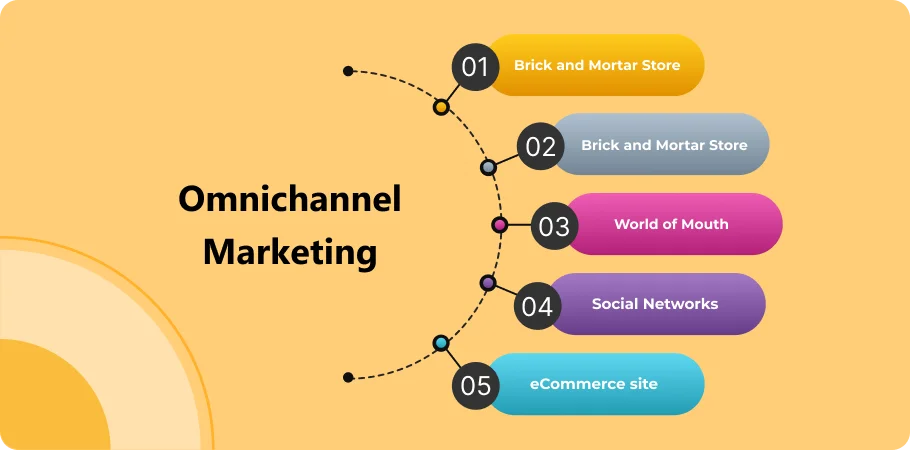
Omnichannel marketing ensures customers have a smooth and connected experience with a brand, no matter where they are. Everything should feel consistent and accessible when browsing a website, checking out social media, or visiting a store. Imagine you’re shopping for a new pair of shoes. You might start by looking online, then check out reviews on social media, and finally, head to the store to try them on. The experience feels seamless with omnichannel marketing – like all these steps are connected and working together.
The key to omnichannel marketing is understanding what customers shop and giving it to them wherever they are. Businesses can create personalized experiences that keep customers happy and bring them back for more by using data and paying attention to how people interact with the brand. It’s all about making things easy and enjoyable for the customer, no matter how they shop.
Customizing KPIs for Industry
While some key performance indicators (KPIs) are universally crucial for omnichannel marketing success, like customer lifetime value (CLTV) and customer acquisition cost (CAC), a genuinely effective strategy goes beyond a one-size-fits-all approach. Different industries have unique customer journeys, goals, and challenges. By tailoring your KPIs to your specific industry, you can get deeper insights and optimize your omnichannel marketing efforts for maximum impact.
Here’s a breakdown of how to tailor KPIs for your industry:
1. Understand Your Customer Journey
Understanding the omnichannel customer journey in the context of omnichannel marketing is essential for businesses aiming to create seamless and personalized customer experiences. A customer journey refers to the series of interactions that a customer has with a brand across various touchpoints and channels throughout their purchasing process. By comprehensively understanding the omnichannel approach of these journeys, Businesses can adjust their marketing strategies to better fit the needs and expectations of their customers at each stage of the buyer’s journey.
Identify key touchpoints to map out the various stages of your customer journey, pinpointing where customers interact with your brand across different channels (digital and physical). For example, a travel company might track website visits, email marketing engagement for promotions, in-store consultations, and mobile app usage for booking and itinerary management. Consider the unique aspects of your industry. An e-commerce business might focus on product discovery behavior on its website, while a healthcare provider might track appointment scheduling patterns.
2. Align KPIs with Industry Goals
Don’t get bogged down by measuring every metric. Identify the critical goals for your industry and choose KPIs that directly contribute to achieving those goals. For instance, a bank might prioritize customer acquisition through online account opening rates, while a software-as-a-service (SaaS) company might focus on user engagement through in-app feature adoption rates. Research industry benchmarks for relevant KPIs. This provides a baseline comparison to understand how your performance stacks up against competitors.
3. Leverage Industry-Specific Data Sources
While customer data like demographics and purchase history is valuable, consider industry-specific data sources that can offer deeper insights. For example, a restaurant chain might analyze social media sentiment to gauge customer feedback on new menu items. At the same time, a financial services company might track industry news mentions to understand brand perception.
Many industries have specialized marketing tools that provide relevant data and analytics. For instance, a travel company might use flight search trend data to inform targeted marketing campaigns. At the same time, a real estate agency might track property listing views and inquiries to optimize online listings.
Examples of KPIs by Industry:
- E-commerce: Shopping cart abandonment rate, product page conversion rate, average order value
- Travel & Hospitality: Hotel booking lead time, conversion rate for specific destinations, and customer satisfaction with post-trip surveys.
- Finance & Banking: Mobile banking app downloads, loan application completion rates, customer churn rate.
- Healthcare: Patient appointment booking rates, medication refill adherence rates, Net Promoter Score (NPS) for patient satisfaction.
Remember, KPIs are a roadmap, not a destination. Regularly analyze your data, identify trends, and adapt your KPIs as needed to ensure your omnichannel marketing strategy stays aligned with your industry and customer needs. By tailoring your KPIs, you can gain a sharper focus on what truly matters for your industry, leading to more effective marketing initiatives and a competitive edge.
Additional Considerations
- Landing pages: These can be used within your omnichannel marketing efforts to capture leads or promote specific products or services. Track KPIs like landing page conversion rate to measure their effectiveness.
- Cross-device interactions: Modern consumers seamlessly switch between devices throughout their customer journey. Ensure your omnichannel marketing strategy delivers a unified experience across devices. Track KPIs for each device to identify any gaps.
- Brand loyalty: A successful omnichannel strategy fosters brand loyalty by providing a positive and consistent customer experience across all channels. Track KPIs like customer churn rate and Net Promoter Score (NPS) to measure brand loyalty.
Stages of Customer Journey
- Awareness: This is the first stage where a customer becomes aware of a brand, product, or service. Various factors, such as advertisements, social media posts, word-of-mouth recommendations, or online searches, can trigger this awareness.
- Consideration: Once aware of the brand, customers enter the consideration stage, where they evaluate different options and gather information to make an informed decision. During this stage, customers may visit the brand’s website, read reviews, compare prices, or seek advice from friends and family.
- Purchase: After evaluating their options, customers make a decision and proceed to make a purchase. It could happen online through the brand’s website, mobile app or offline at a physical store. The purchase stage is critical, and businesses must ensure a smooth customer experience to encourage conversion.
- Post-purchase: The buyer’s journey doesn’t end with the purchase; it extends into the post-purchase stage. Here, businesses can engage with customers, provide support, and encourage repeat purchases. This stage is essential for building customer loyalty and advocacy.
Integrating Online and Offline Channels
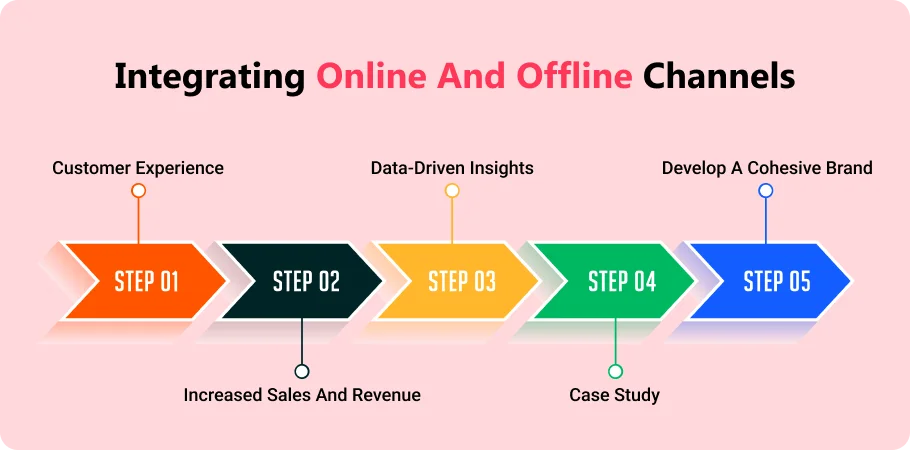
Understanding the definition of omnichannel marketing is essential for businesses aiming to create seamless and personalized customer experiences. The omnichannel approach ensures that customers receive a seamless experience, whether engaging with the brand through a single or multiple channels simultaneously. Integrating omnichannel marketing examples is a fundamental aspect of omnichannel marketing. It aims to create a seamless, cohesive customer experience regardless of how customers engage with a brand. By effectively integrating these channels, businesses can maximize their reach, engagement, and, ultimately, their revenue through omnichannel marketing.
Here’s how integrating omnichannel campaigns plays a crucial role in omnichannel marketing:
Creating Consistency
Through single-channel or multichannel marketing, it ensures that customers receive a consistent brand experience across all touchpoints. Whether browsing a website, visiting a brick-and-mortar store, or engaging with the brand on social media, customers should encounter the same messaging, branding, and level of service. This consistency helps build faith and loyalty among customers.
Enhanced Customer Experience
It offers businesses an enhanced customer experience by providing seamless transitions between touchpoints. For example, customers may research products online before visiting a brick-and-mortar store to make an in-store purchase or browse items in-store and complete their purchase online. Businesses can accommodate customer choices and behaviors by facilitating these omnichannel experiences and ensuring consistency across customer touchpoints, ultimately enhancing customer satisfaction and loyalty.
Leveraging Data Insights
It enables businesses to capture valuable data insights from customer interactions across various touchpoints. By leveraging data interpretation and customer relationship management (CRM) systems, businesses can better understand customer preferences, behaviors, and purchasing patterns. This data-driven approach allows businesses to personalize marketing endeavors, target customers more effectively, and optimize their omnichannel strategies for better results.
Driving Sales and Revenue
It ultimately leads to increased business sales and revenue. By providing customers multiple pathways to engage with the brand and make purchases, businesses can capture sales from a wider audience and drive conversions across various channels. For example, an online customer may be encouraged to visit a store in person to see products firsthand. In contrast, an in-store customer may be enticed to purchase online for added convenience.
Personalizing Marketing Efforts

Essential Steps:
- We need to gather information about what customers like and how they act.
- We group them based on similarities, like what they buy or where they live. After that, we created detailed profiles for each group to understand what they wanted.
- We make messages and offers for them so they feel like we’re talking directly to them.
We use tools to do this quickly and easily. We also look at what they’ve done before to predict what they might like next. The messages we send change based on what people do or who they are. All the messages people get, whether on a website or in an email, must look and feel the same. We ask for customer feedback on what they think so we can keep making things better. And when they talk to us, we reply immediately and change things if needed. These steps help us connect with customers better and make them happier.
Book a CrmOne Demo
Experience the CrmOne simplicity and power. Our experts will show you the best ways to use it and answer your questions in real time. See how CRMOne fits your needs.
Implementing Marketing Automation
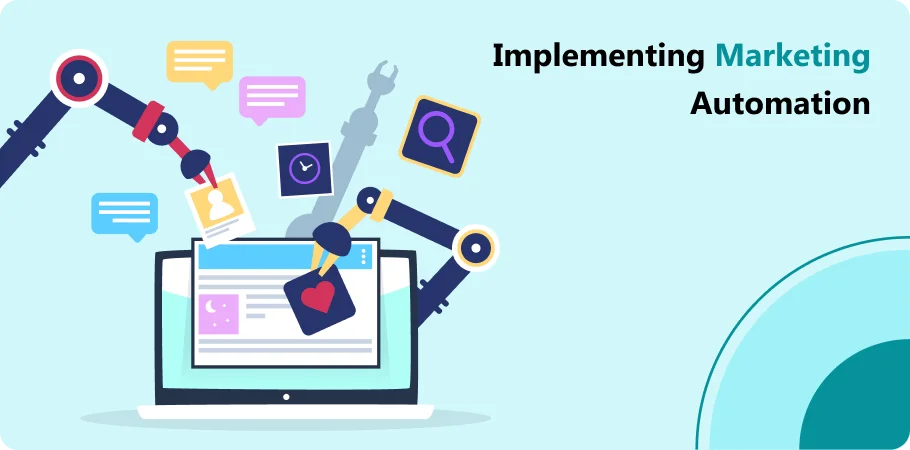
Using marketing automation in omnichannel marketing is like having a helpful robot assistant who does repetitive tasks for you. It’s all about using technology to make things easier and save time. With marketing automation, businesses can set up automatic emails and social media posts and track how customers interact with them across online channels. For example, if someone signs up for emails, the system can automatically send them a welcome message to improve customer retention. Or if someone puts something in their online shopping cart but doesn’t buy it, the system can send them a reminder later to help convert them into customers.
By using marketing automation, businesses can stay in touch with customers across different places, ensuring they have a consistent experience no matter where they shop. Plus, it helps companies to provide customer service by automatically responding to inquiries or issues. Overall, marketing automation helps businesses build better customer relationships and make more sales.
Engaging Customers Across Channels

Implementing marketing automation tools for omnichannel marketing starts with planning where and how you want to reach your customers. Then, you need to make sure all your tools and systems can talk to each other smoothly. After that, you group your customers based on things like age, interests, and behavior so you can speak to them in a personal way with personalized messaging. You’ll also need the right tools, like HubSpot or CrmOne, to help you automate things like sending emails and messages.
When you create content, ensure it’s exciting and fits each channel you use. Automation can also help you automatically send follow-up messages when someone takes a specific action. Keeping your brand and message consistent throughout all the places you’re reaching out to is essential. Tracking how your campaigns are doing and making adjustments based on what’s working and what’s not is critical. And remember, it’s an ongoing process of learning and improving!
Optimizing for Mobile Apps
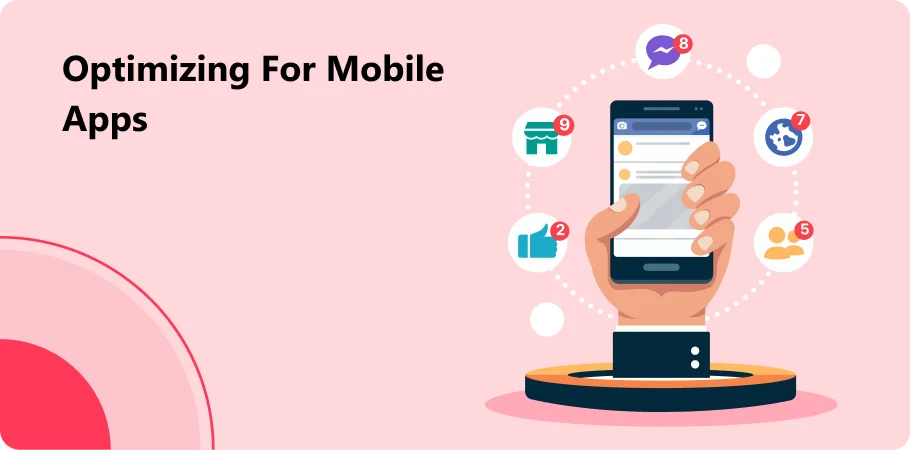
Ensuring your website and other marketing materials work well on phones and tablets is crucial, especially in multichannel marketing. Many people use their mobile devices to browse online, so making that experience smooth is essential. It’s not just about having a website that looks good on small screens; you want everything to be easy to use, whether someone’s on their phone or computer. It is essential because customers expect things to be seamless and user-friendly, whether shopping online or using mobile apps.
You might lose customers if your website or app is simple enough to navigate on a phone. That’s why ensuring everything works well on phones and tablets is vital. This way, people can check out your products wherever and whenever they want. Plus, if they need help, they can quickly get assistance through chat or messages right on their phone. By making things mobile-friendly, you can provide a seamless user experience, meet customer expectations, and engage with them across more channels while optimizing your marketing funnel and providing excellent customer service, even for in-store purchases and mobile apps.
Critical Components of a Successful Omnichannel Marketing Strategy
Here are the components of the Omnichannel Marketing Strategy:
- Customer Journey Mapping: Begin by mapping the customer journey across all channels and touchpoints. It will help you identify critical interactions and opportunities to engage customers.
- Integrated Marketing Channels: Ensure seamless integration across all channels, from your website and digital channels to email campaigns and in-store promotions. Consistent messaging and branding are crucial to maintaining a cohesive brand experience.
- Personalized Communication: Leverage data and analytics to deliver personalized communication tailored to individual preferences and behaviors. Customization is critical to driving engagement and conversions, whether through targeted emails, custom offers, or personalized recommendations.
- Marketing Automation: Streamline your marketing with automation tools that enable you to schedule, automate, and track marketing campaigns across social media channels. Automating repetitive tasks gives you more time for essential strategies and creative work.
- Data Analytics: Harness the power of data interpretation to gain actionable insights into customer behavior, omnichannel marketing campaign performance, and market trends. Analyzing data in real-time allows you to make informed decisions and optimize your omnichannel marketing strategies for better results.
Future Trends and Considerations
Omnichannel marketing is changing a lot because of new technology and how people shop. One big thing is making things personal for each customer, even if there are many customers. This means using computers to determine what each person likes and then showing them things they’ll want. Also, more people are using devices like smart speakers to search for stuff by talking, so companies need to ensure they show up when people search this way. Another cool thing is using virtual and augmented reality in marketing. It’s like playing a video game but for shopping. For example, you could try on clothes virtually or take a virtual tour of a hotel you’re considering staying in.
Companies must also ensure that online and offline shopping work together smoothly. You can pick something up in the store quickly if you buy it online. And if you visit a store, they might give you special offers based on your online purchase. Finally, companies need to be quick and flexible with their marketing. Things change fast online, so they need to be able to change their ads and offers quickly to keep up.
Conclusion
In today’s digital age, businesses must adopt an omnichannel marketing approach. It means creating a seamless customer experience as they interact with your brand across multiple devices and channels. By understanding your customers’ journeys and how they shop, you can tailor your channel marketing efforts to meet their needs at every touchpoint. With CrmOne, you can integrate multiple channels and omnichannel campaign to provide a cohesive experience for your customers.
An effective strategy allows you to reach your customers wherever they are, whether browsing your website on their laptop, scrolling through social media on their phone, or visiting your store in person. You can personalize your marketing messages and promotions by leveraging data and analytics to resonate with each customer. This personalized approach increases engagement and fosters loyalty and repeat business.
By focusing on building an omnichannel experience, you can stay on top of the competition and meet the evolving expectations of today’s consumers. Integrating all your marketing channels and touchpoints allows you to create a seamless brand experience that resonates with your audience. You can drive engagement, increase sales, and build lasting customer relationships by prioritizing the customer journey and delivering a seamless experience across all channels.
Get started for Free
Start for free today. Boost your sales by clicking the Get Started button. With CRMOne, you can manage leads, sales, and customer service all in one place.


